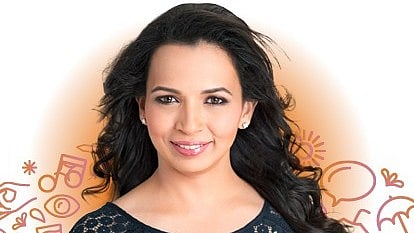Diabetes mellitus, or diabetes, is one of the most prevalent metabolic disorders characterised by a high blood sugar level (hyperglycemia) that occurs either due to decreased production of insulin or insulin resistance - inability of insulin to act properly. If untreated and uncontrolled diabetes can have severe health complications damaging vital organs like the heart, kidneys, eyes, nerves, and blood vessels.
Nutrition and physical activity are essential aspects of a healthy lifestyle and are crucial, especially in the case of chronic health conditions such as diabetes. Along with other health benefits, following a healthy meal plan and being physically active can help maintain blood glucose levels and control diabetes and its associated complications. Though diabetes is controllable, certain steps can help cope with diabetes related disorders and prolong its health impacts, primary being a proper diet. Shilpa Joshi, Head of Metabolic Nutrition, Fitterfly in Mumbai shares a complete dietary plan for diabetes patient which will help manage blood sugar level along with other health benefits.

Dietary recommendations for a person with Diabetes”
Diet plays a vital role in diabetes management as the blood sugar level fluctuates based on the type of food intake. A well-formulated diet plan not only controls blood sugar (glucose) but also manages body weight and controls heart disease risk factors, such as high blood pressure and lipids.
Rich in nutrients but moderate in carbohydrates

Timolina
A diet for diabetes is based on eating three meals a day at regular times, which helps in better utilisation of insulin and provides a well-organised, nutritious way to reach health goals safely. A diet consisting of a healthy-eating plan rich in nutrients but moderate in carbohydrates and fats is recommended. Key elements of a healthy diet in diabetes are vegetables, fruit and whole grain.
Some of the general recommendations for diet for type 2 diabetes:
Healthy Carbohydrates - During digestion, both complex and simple carbohydrate break into glucose blood glucose. Here’s how you ease this process.

Sergejs Rahunoks
Include a variety of vegetables in all meals.
Switch to whole grains and restrict the intake of refined grains.
Legumes, such as beans and peas, are a rich source of healthy carbohydrates.
Low-fat dairy products, such as milk and cheese, should be included in the diet plan
Dietitian’s advice avoiding unhealthy carbohydrates, such as fruit juices, fruit juices, sugar sweetened beverages, products made of Maida and white rice.
Fiber-rich foods - Dietary fibers obtained from plant parts are highly recommended for diabetic people as it improves digestion, thus assisting in blood sugar control.

Whole grains, such as cereal, oats, wheat, etc., are a rich source of dietary fiber.
Include lots of vegetables and legumes such as dals, sprouts, beans and peas in the diet.
Rather than juices prefer to eat whole fruit as it provides an ample amount of fiber.
Munch on nuts and seeds for healthy snacking.
Protein diet - A high-protein diet helps to lower the blood glucose in persons with type 2 diabetes and improves overall glucose control.

Opt for lean meat, chicken, and eggs to increase the protein intake.
Eat heart-healthy fish such as salmon, mackerel, tuna, and sardines at least twice a week as it is rich in omega-3 fatty acids, which may prevent heart disease.
Tofu, nuts, peanuts, dals, dried beans, dairy protein and peas, such as chickpeas and split peas, are good protein sources in plant products.
Good fats - Foods containing monounsaturated and polyunsaturated fats can help lower your cholesterol levels. Eat foods with heart-healthy fats, which mainly come from

oils that are liquid at room temperatures, such as ground nut, rice bran, mustard, sesame and olive oil
nuts and seeds being invisible source of good quality fat
heart-healthy fish such as salmon, tuna, and mackerel
The American Diabetic Association (ADA) has also classified certain food items that diabetic people should avoid. These include:
Saturated fats. High-fat foods and animal proteins like butter, ghee, coconut oil, palm kernel oils, and high-fat dairy products such as cream and high fat paneer.
Trans fats. Processed foods, baked goods and dalda.
Cholesterol. High-fat dairy products, high-fat animal proteins, egg yolks, liver, and other organ meats.
Unhealthy carbs. White bread, rice, pasta, refined noodles, snacks like puri and mathri.
Sugar-sweetened foods. Sweets, such as baked goods, candy, ice cream, mithais & beverages with added sugars.
Recommended Diabetes Diet:
Vegetarian or Vegan - Vegetarian eating plans emphasize plant-based foods, which generally include nuts, seeds, beans, and meat substitutes with little or no animal products.
DASH Diet - The DASH or “Dietary Approaches to Stop Hypertension” diet plan limits foods high in sodium (salt), saturated fat, red meat, sweets, added sugars, and sugary drinks. Like the Mediterranean diet, it emphasizes plant-based foods, such as fruits, vegetables, dried legumes, whole grains, nuts, and seeds, and also includes fish, poultry, and low-fat dairy products. The DASH diet is a nutrient-rich sustainable eating plan for people with type 2 diabetes. It can also help reduce blood pressure, cholesterol, insulin resistance, and body weight.
Meal plan methods
Apart from knowing what to eat, there are meal plan methods that help plan how much one should eat. The two popular methods are- the plate method and carbohydrate counting, also called carb counting.
Plate method
This method helps to control the portion sizes by recommending the amount of each food group one should consume. This method works best for lunch and dinner.
It says that a 9-inch plate must contain-

Non-starchy vegetables, half of the plate
Meat or other vegetarian proteins like dal sprouts and paneer on one-fourth of the plate
A grain or other starch on the last one-fourth.
Carbohydrate counting
This method involves keeping track of the amount of carbohydrates consumed each day. It helps manage blood glucose levels.
It is primarily a meal planning tool for people with diabetes who take insulin, though not all people with diabetes need to count carbohydrates.
To count the carbohydrates in the food consumed, one must know (read Nutrition Facts food label) or learn to estimate the number of grams of carbohydrates in the foods consumed by the person each day.






